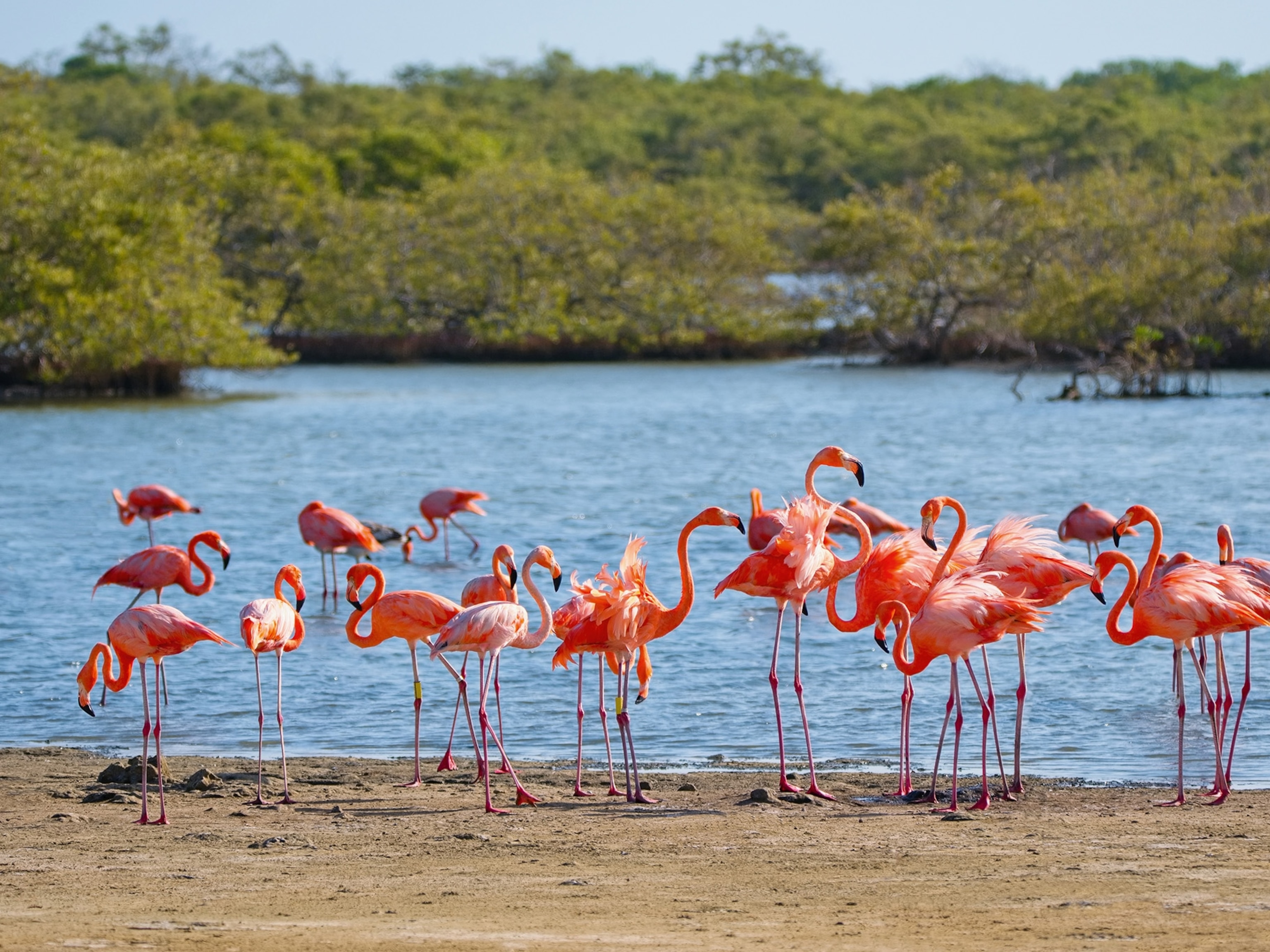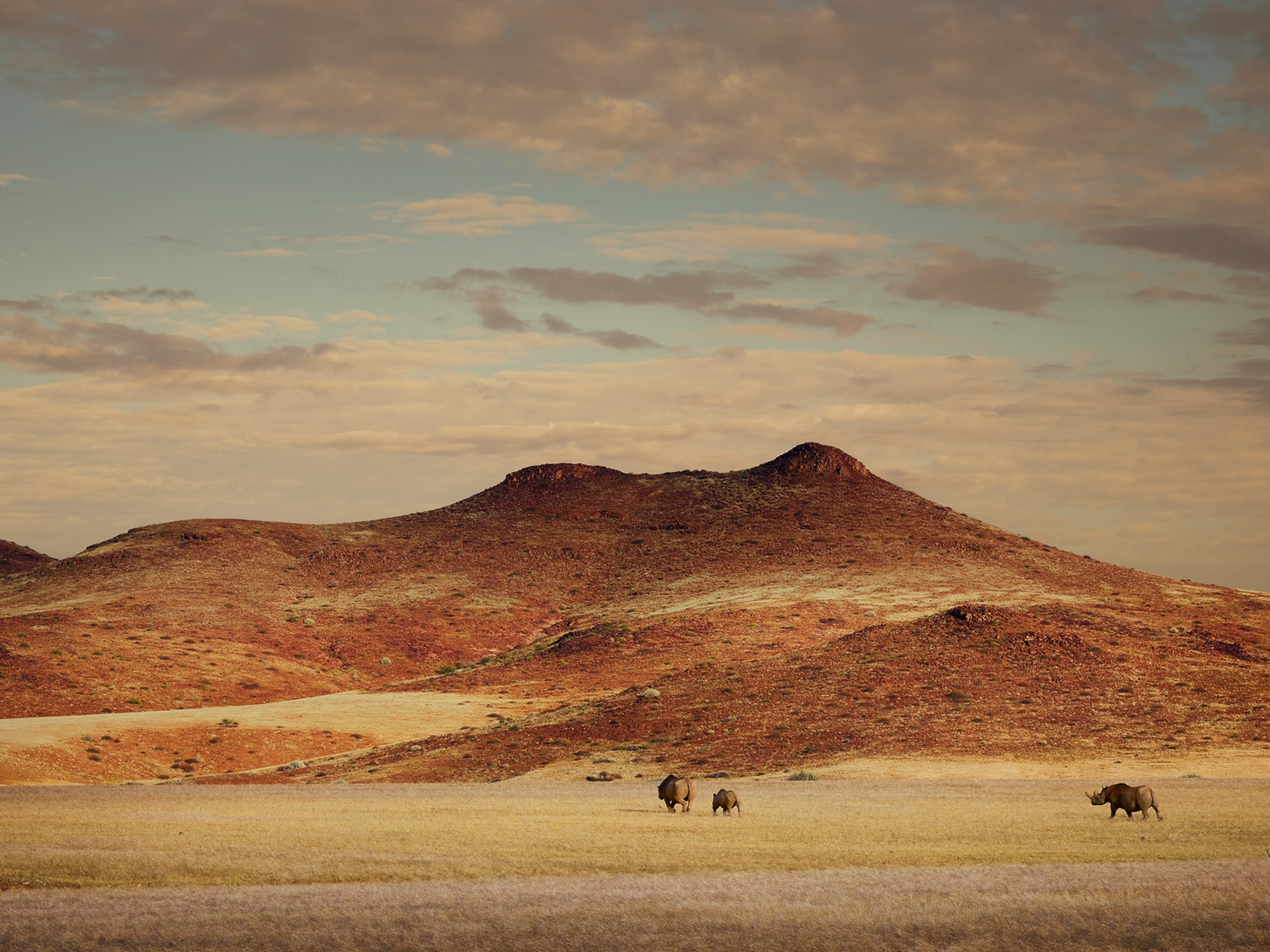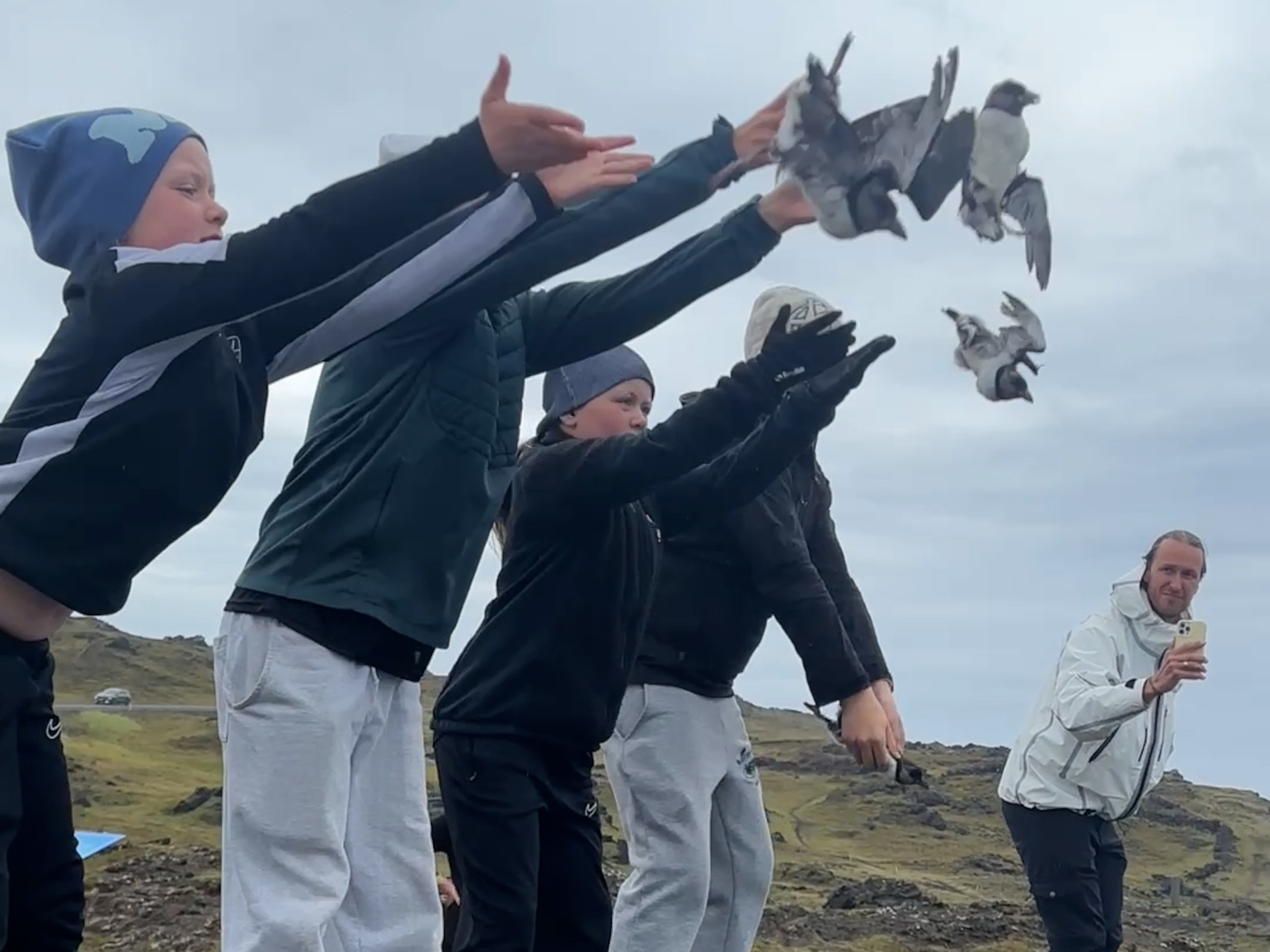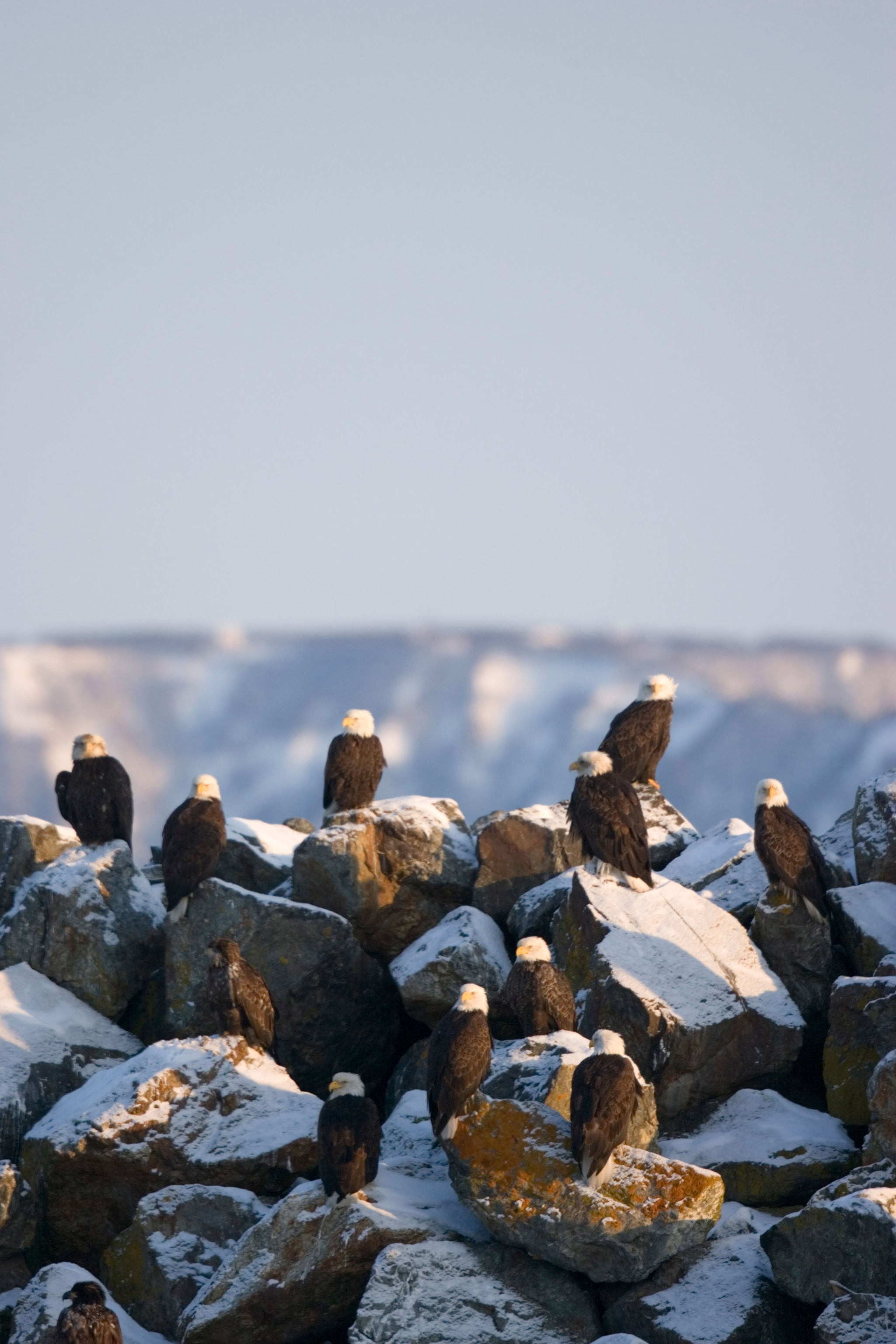
Winter is prime time for watching bald eagles—here’s how
Recovered from near extinction, the U.S. national bird is now abundant and easy to see.
Two bald eagles lock talons, tumble, and twist against a gray sky.
Hidden inside a small wooden structure designed to allow people to spy on the birds, we crane our necks to watch their aerial acrobatics. Suddenly, one eagle breaks away and swoops low over the Mongaup Falls Reservoir in New York, startling a flock of black ducks that darts into the shallows.
“It’s going to perch!” Brad Orey says, positioning a telescope and focusing the lens on a tree where the eagle has landed. “We’ve got a percher!”
(Bald Eagles May Have to Eat Toxic Seals, Study Says)
Orey volunteers with the Delaware Highlands Conservancy, a nonprofit conservation land trust straddling the New York–Pennsylvania border. For the last 22 years, he has driven two hours north from his home in Easton, Pennsylvania, to spend Sundays in January and February—peak eagle-watching season—showing people the majestic birds soaring over the Catskill Mountains and waterways in New York’s Sullivan County.
Seventy-five miles northwest of New York City, the Mongaup Falls Reservoir is one of the best places in the Northeast for witnessing the bald eagle’s remarkable recovery. When I first visited some 20 years ago, I’d never seen so many eagles in one place—more than 50 in a weekend. I’ve always wanted to return, so my family and I packed the car with snacks and warm clothes for some friluftsliv, as the Norwegians say, spotting eagles in the Catskills.
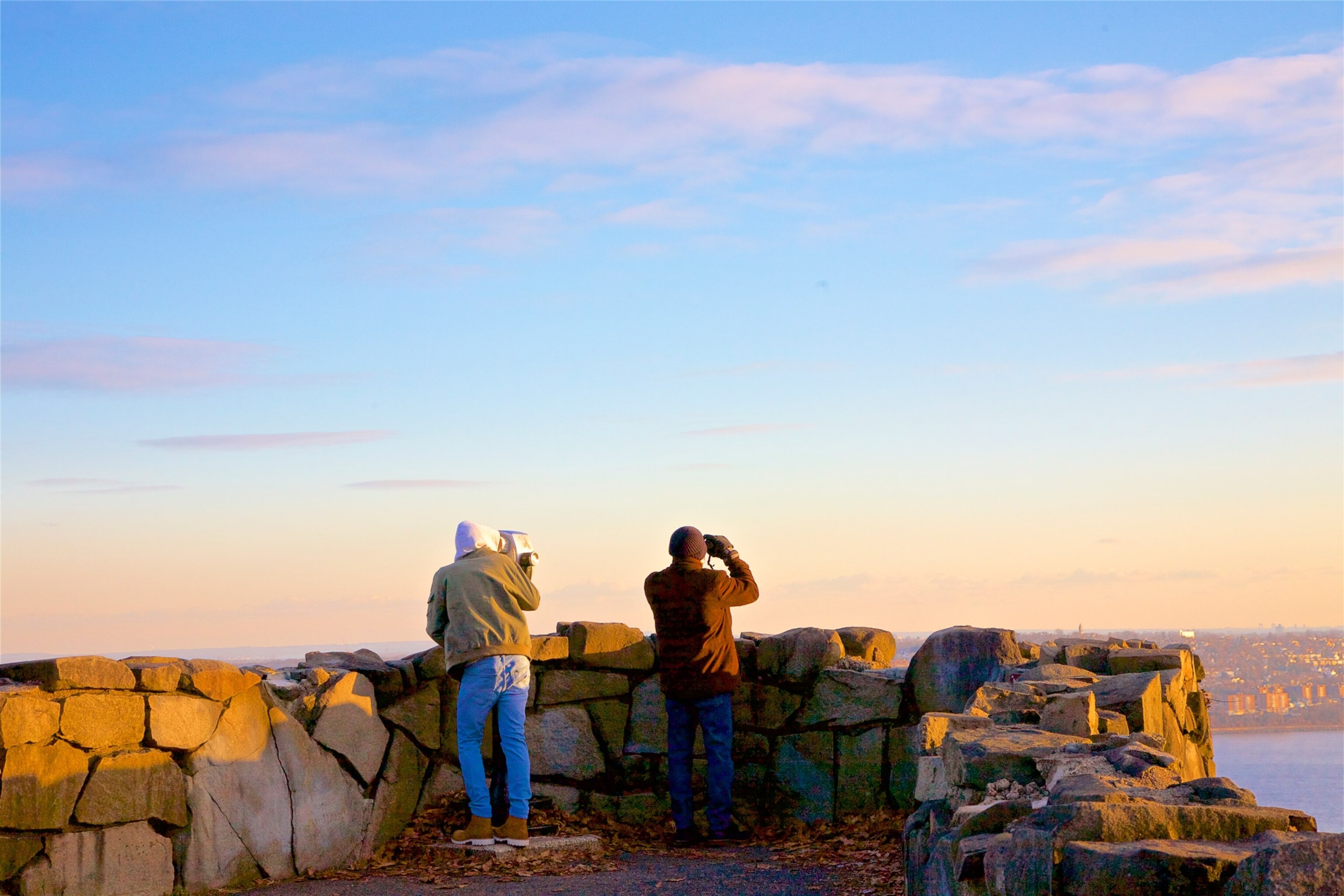
Epic comeback
Fifty years ago, there were no bald eagles here. The living symbol of American democracy, crowned the country’s national bird in 1782, was destined for extinction. Bald eagles had numbered in the hundreds of thousands before European settlement, but plummeted in the aftermath of World War II when farmers began using DDT to combat pests gnawing their crops.
The chemical washed from the farm fields into rivers, streams, and lakes and collected in the fatty tissues of fish. Many eagles eating contaminated fish became sterile; others still reproduced, but their eggs were so weakened by the poison that they cracked under the weight of incubating adults. By the early 1960s, only about 400 nesting pairs of bald eagles survived in the lower 48, largely in the Great Lakes states and the Pacific Northwest.
This bald eagle is a survivor—and so is its species.
By 1972, when DDT was finally banned, New York State had only one remaining pair of nesting bald eagles. A small team of biologists launched a program in 1976 to attempt to boost the population. “There were some naysayers who said the environment was still too contaminated to try to bring the eagles back,” remembers Pete Nye, the retired New York Department of Environmental Conservation biologist who spearheaded the restoration program. “But we thought it was worth a shot.”
New York’s last nesting pair was living in a tree overlooking Hemlock Lake, 35 miles south of Rochester. They hadn’t hatched a chick in more than a decade. Yet over the span of the next seven years, they proved to be excellent foster parents to eight baby eaglets, donated from a research program in Maryland and slyly tucked into the nest by Nye and his team. “It was a terrific success,” Nye says. “But fostering was a slow process, and we had no way of knowing if the chicks would survive five years to maturity and breed on their own.”
The biologists decided to try an experiment that might speed the process: a falconry technique called “hacking,” from an old English term meaning hand-rearing to independence. “This had never been attempted with eagles before,” Nye says.
There’s nothing like looking into the eyes of an eagle. It’s so inspiring.Peter Nye, RETIRED NEW YORK DEPARTMENT OF ENVIRONMENTAL CONSERVATION BIOLOGIST
The experiment’s first test subjects were named Henry and Agnes, sibling chicks plucked from a nest in Wisconsin. Their new home was a 40-foot tower outfitted with an artificial nest overlooking Montezuma National Wildlife Refuge, 45 miles east of Rochester. The tower included a blind where the biologists could secretly monitor and feed the chicks fish until they were ready to fly solo.
“This was a huge gamble,” Nye says. “But low and behold, four years later, Henry and Agnes were found nesting 84 miles north in Watertown, New York.” (Sibling eagles don’t usually mate, Nye says, but there were few other eagles to choose from at that time.) “They had two chicks that first season. It was astounding. After that, we wanted to expand the program in a big way.”
The biologists forged an expedition to Alaska, where eagle populations had been sheltered by geography from rivers tainted with DDT and remained healthy. Traveling along the coast by boat, they went from nest to nest, climbing trees, collecting chicks, feeding and caring for them on the boat. Then they flew the eaglets in a chartered jet direct from Juneau, Alaska, to New York.
In this Alaska town, bald eagles send people to the hospital.
As soon as the plane landed, the team drove the eagles to their new home: a deluxe hacking tower, outfitted with one-way glass, remote-controlled cameras and doors, and 24-hour room service from a biologist living in a camper onsite.
Over the next 13 years, Nye and his team released 200 eaglets from four towers located in areas where eagles had been historically abundant and the habitat still provided healthy woodlands and plentiful fish. As the eagles took to the skies, they seeded renewed hope for the bald eagle’s future. With news of the program’s success, Nye received calls from biologists in Pennsylvania, New Jersey, Massachusetts, and many other states wanting to replicate the program.
The Northeast hackers ultimately released 1,200 eagles, helping the bald eagle recover so well that it was removed from the Endangered Species List in 2007. By then, there were more than 10,000 bald eagles in the Lower 48, and the numbers were growing exponentially throughout their entire range. “We were so blessed with the success of this program,” Nye says, still enamored as ever by the birds. “There’s nothing like looking into the eyes of an eagle. It’s so inspiring.”
How to see eagles in the Catskills
In winter, eagle numbers in the northern U.S. soar even higher as migratory Canadian eagles push south in search of open rivers, streams, and reservoirs brimming with fish. What makes the Mongaup Falls Reservoir a magnet for both resident and migratory eagles is a 4,000-kilowatt hydroelectric station churning ice-free water thick with river herring.
The eagles—and their adoring public—have become an important part of the Catskills’ economy. “We have thousands of tourists who come to see them every winter,” says Bethany Zarnowski, communications and development manager with the Delaware Highlands Conservancy. “We offer guided eagle bus tours, and partner with local hotels and inns, which donate a small portion of their sales [to the conservancy] to help protect land and wildlife habitat.”
Go inside the efforts to protect eagles being killed for black-market body parts.
The bus tours were canceled this year due to the pandemic. Currently, Orey is among a small group of volunteers “unofficially” staffing the bird blind, tallying eagle sightings, and teaching visitors proper “eagle etiquette” to avoid disturbing the birds. “With the cold weather, you don’t want the eagles to use their energy trying to get away from people,” he says.
“On a good day, we have a hundred sightings,” Orey continues. In the last two hours, he has counted nearly 40.
Consulting the map that I printed from the Delaware Highlands Conservancy’s website, we identify several places along the Delaware River where we might have a chance for a few more eagle sightings in the comfort of our heated car.
Winding along heavily wooded roads, we stop in Barryville, where we buy some sandwiches and replenish our snacks. Then we follow the river north to Minisink Ford and hang a left across the Roebling Bridge, the oldest existing wire suspension bridge in the country. In Lackawaxen, Pennsylvania, we find a parking lot on the riverbank next to the Zane Grey Museum, which offers interpretive displays and educational films about eagles in the Upper Delaware River region.
We gaze up at the mountain on the other side of the river. “There’s one,” my husband says, and we jostle in our seats for a better look at the giant bird winging south—a picture of strength and resilience half a century after it was almost lost.




